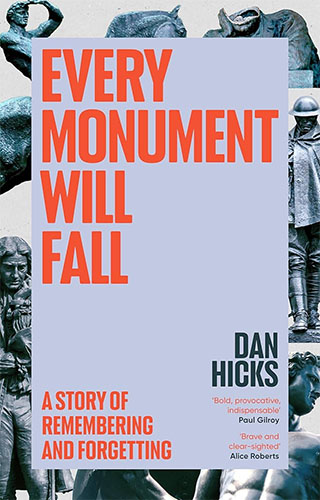
Every Monument Will Fall is a curious book – part biography, part history, part polemic and part cry of grief. The book covers the story of a cup made from the cranium of an unknown individual (probably a woman of African descent, possibly a former enslaved individual) from its creation in 1838 – the date of the emancipation of enslaved people in British colonies – to its removal from use in an Oxford University college in 2015. The fact that this person remains unidentified (and is probably unidentifiable) contrasts strongly with the biographies of the owners of the cup throughout its history as a manufactured object. Thus the book is a history of anthropology, archaeology and museology and the way those disciplines have been shaped by racist and colonial thinking through much of the 19th and 20th centuries. The book concludes with a discussion of the way that colonial arguments continue in current discussions of heritage.
The theme of the book revolves around identity and the relative levels of respect paid to oppressed and oppressor. To achieve this, the author refuses to use the adopted names (and in some instances, given names) of a number of individuals, leaving their identities to the extensive Notes and Bibliography sections. This makes an interesting contrast to the fact that so many of the people affected by these individuals remain unknown, and the un-naming of known individuals makes that point very powerfully.
The book is written as a conversation – the reader is addressed as ‘you’ throughout – largely to avoid any kind of ‘us and them’ exclusivity. However, much of the book is shaped by discussions between the author and the late Professor Mary Beaudry and the author’s sense of loss is very clear throughout the book.
The book is heavily digressionary. Given its subject matter, it needs to be. It covers a wide range of subjects from the formation of the Pitt Rivers Museum, the development of anthropology in Britain, the life of Augustus Lane Fox and the subsequent use of his personhood and memory and the recent ‘culture war’ in the UK and USA. It also follows some of the money trails left by the buying and selling of objects. It is worth persevering with, however, as these discussions are necessary background for the final chapters, which tie them together to make a series of powerful statements that question how heritage is used by the far right and how those working in the historic environment are failing to tackle that, to everybody’s detriment.
This is not an easy book to read. It is a complex subject and hence is not aimed at the general reader, but directed to people with an interest in heritage and how heritage is managed and used. I would consider it essential reading for anyone involved in heritage management and would recommend it in the strongest terms for those working in museums and the historic environment.
